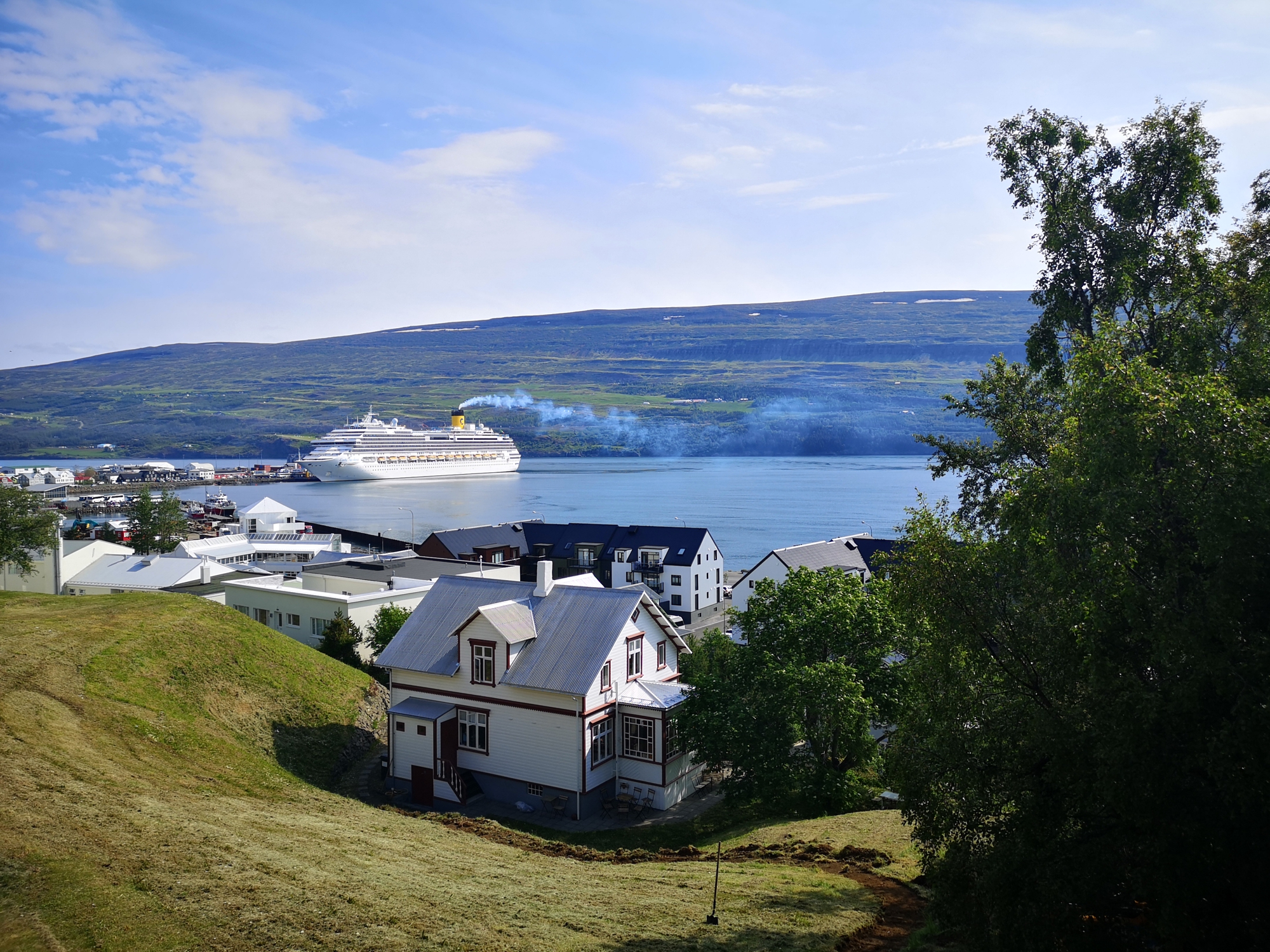Cruise ships are bringing new numbers of happy passengers to the North, contributing to the local economy, notably in Iceland and Norway. They are also regrettably bringing alarming pollution as highlighted in the June report by the European environmental organization Transport Environment. Iceland and Norway now rank among the top ten European countries with the highest pollution levels from cruise ships! Arctic Portal has previously pointed towards this growing, unpleasant problem.
At the start of the year, projections indicated that the number of cruise ships visiting Icelandic ports in 2023 would increase as much as 50% from 2022. The report reveals that this has more than materialized, resulting in an estimated 80% increase in the number of cruise passengers, surpassing 800,000 cruise passengers in Iceland throughout the season from May to September. A record!
The report identifies Iceland as the ninth-ranked European country facing significant sulfur dioxide pollution from cruise ships. Norway surpasses Iceland as fourth on the list while Italy is the most affected by cruise ship pollution in Europe.
Notably, the report reveals that nitrogen dioxide pollution from cruise ships in Iceland and Norway exceeds that produced by the entire passenger car fleet in each respective country.
Cruise ships sailing between European ports are the primary contributors to pollution in the region, surpassing the emissions of all the cars on the continent last year. According to the report by Transport & Environment, over 200 cruise ships operating between European ports are equivalent to over one billion vehicles in terms of pollution.
In the previous summer season, the 214 cruise ships that sailed around Europe emitted 509 tons of sulfur dioxide into the atmosphere. While the port of Barcelona experiences the highest pollution levels, Italy as a whole suffers the most significant sulfur dioxide emissions. Not surprisingly, Mediterranean countries bear the brunt due to the frequency of cruise ship operations akin to a bus service between cities. Nonetheless, Norway ranks fourth on the list.
Various cities have taken steps to combat this pollution, most notably Venice, which implemented a ban on cruise ships docking two years ago. As a result, the city experienced an impressive 80% reduction in toxic emissions, propelling it from the most polluting port in Europe to 41st place within four years.
Constance Dijkstra, the spokesperson for Transport & Environment, acknowledges that Venice has demonstrated the possibility of reducing pollution from these ships, emphasizing that a ban is not the sole solution. One effective measure is mandating vessels to connect to electricity while docked.
In Cartagena, located on the southeastern tip of Spain, cruise ships dock approximately 200 times per year, attracting over 600,000 visitors to the city. Consequently, the city authorities have recently decided to enforce an electricity plug-in requirement for all docking ships within two years.
Today, July 17, the town of Akureyri, Iceland, is welcoming three large cruise ships. Akureyri is expecting up to 300 visits this season, which is a huge increase as stated before. Indications show that the increase is likely to continue in the years to come. Only one peer currently offers an electrical connection for vessels while in harbor despite the fact that Iceland is known for its renewable energy sources. More installation is very needed - fast!!!!
Source: Visir, Transport & Environment



